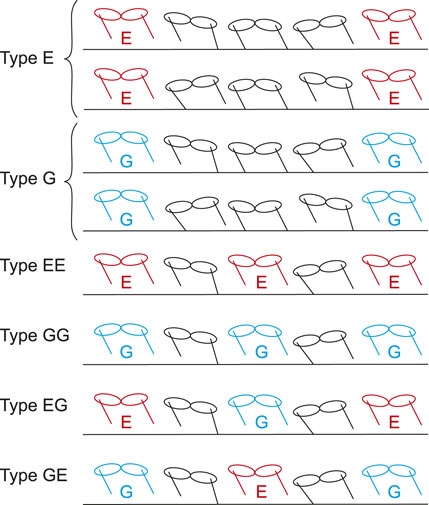- 1Department of Electrical and Mechanical Engineering, Nagoya Institute of Technology, Aichi, Japan
- 2Department of Aeronautics and Astronautics, Graduate School of Engineering, Kyoto University, Kyoto, Japan
- 3Laboratory of System Physiology, Joint Faculty of Veterinary Medicine, Yamaguchi University, Yamaguchi, Japan
- 4Department of Mechanical Engineering and Science, Graduate School of Engineering, Kyoto University, Kyoto, Japan
Cheetahs are the fastest land animal. Their galloping shows three characteristics: small vertical movement of their center of mass, small whole-body pitching movement, and large spine bending movement. We hypothesize that these characteristics lead to enhanced gait performance in cheetahs, including higher gait speed. In this study, we used a simple model with a spine joint and torsional spring, which emulate the body flexibility, to verify our hypothesis from a dynamic perspective. Specifically, we numerically searched periodic solutions and evaluated what extent each solution shows the three characteristics. We then evaluated the gait performance and found that the solutions with the characteristics achieve high performances. This result supports our hypothesis. Furthermore, we revealed the mechanism for the high performances through the dynamics of the spine movement. These findings extend the current understanding of the dynamic mechanisms underlying high-speed locomotion in cheetahs.
1 Introduction
Cheetahs are the fastest land animal. They use galloping when moving at their highest speeds, which involves remarkable spine bending movement (Hildebrand, 1959; Bertram and Gutmann, 2009) and stable head height during running. The spine movement allows cheetahs’ gallop to involve two types of flight phase, extended and gathered, as shown in Figure 1 (Hildebrand, 1959, Hildebrand, 1961; English, 1980; Walter and Carrier, 2007; Kamimura et al., 2021). The stable height of the head allows cheetahs to maintain visual contact with their prey, which is achieved not only through a well-designed controller (Grohé et al., 2018), but also through small vertical movements of their center of mass (COM) and small pitching movements of their whole body (Wada, 2011; Ichikawa et al., 2018). The characteristics of cheetah galloping can be summarized as follows: small vertical COM movement, small whole-body pitching movement, and large spine bending movement. We hypothesize that these characteristics provide cheetahs enhanced gait performance, including higher gait speed. However, animal running is a complex phenomenon generated through dynamic interactions between the body’s mechanical systems, nervous system, and the environment; it is difficult to fully understand the mechanisms underlying cheetah galloping only through observational studies.

FIGURE 1. Cheetah galloping involves two types of flight, extended and gathered, which are achieved through spinal movement. Extended and gathered flight occur after liftoff of hindlegs and forelegs, respectively.
To overcome the limitations of the observational approach, modeling research approaches have recently attracted attention (Alexander, 1988; Swanstrom et al., 2005; Bertram and Gutmann, 2009; Aoi et al., 2017; Ambe et al., 2018; Fujiki et al., 2018; Aoi et al., 2019; Toeda et al., 2019). Because the legs can be represented by springs, quadruped models with spring legs were developed to investigate the common and unique principles of animal gaits from a dynamic perspective (Full and Koditschek, 1999; Blickhan and Full, 1993; Farley et al., 1993; Tanase et al., 2015; Gan et al., 2016, Gan et al., 2018; Yamada et al., 2022). Recently, such models have been further improved to investigate the dynamic role of spine bending movements in quadruped running (Cao and Poulakakis, 2013; Pouya et al., 2017; Wang et al., 2017; Kamimura et al., 2015, Kamimura et al., 2018; Yesilevskiy et al., 2018; Adachi et al., 2020). Moreover, quadruped robots equipped with a spine bending mechanism have been developed to investigate the effect of spinal movement on running (Pouya et al., 2017; Chen et al., 2019; Fukuhara et al., 2020, Fukuhara et al., 2021). Furthermore, some researchers focused on the impulse from the ground reaction force to reveal the mechanisms underlying various quadruped gaits (Ruina et al., 2005; Usherwood and Davies, 2017; Usherwood, 2020; Polet, 2021; Kamimura et al., 2021). However, because few researchers have focused on the three characteristics of cheetah galloping, the dynamic effects of the characteristics on running and their mechanisms remain largely unclear.
In our previous studies (Kamimura et al., 2015, Kamimura et al., 2018, Kamimura et al., 2021), we used simple models to reveal the mechanisms under which cheetahs utilize their spinal movements to involve the two types of flight phase to achieve high-speed galloping. However, we focused only on spinal movement and did not incorporate the two other characteristics of cheetah galloping: small vertical COM movement and small whole-body pitching movement. In this paper, we extended our previous models to verify our hypothesis that the three characteristics of cheetah galloping enhance gait performance, including gait speed, and clarify their mechanisms. Specifically, we numerically searched for periodic solutions, and evaluated what extent each solution shows the three gait characteristics. In addition, we compared the three characteristics of the solutions with the measured data of actual cheetahs. We then evaluated gait performance to reveal the relationship between the gait characteristics and performance. Furthermore, we compared the solutions with and without the gait characteristics to reveal the mechanisms by which the three characteristics allow cheetahs to achieve high performance when galloping.
2 Methods
2.1 Model
To investigate the bounding gait of the model with spine flexibility as in previous studies (Cao and Poulakakis, 2013; Kamimura et al., 2015, Kamimura et al., 2018), we used a two-dimensional model (Figure 2) composed of two rigid bodies (Bodies 1 and 2) and two massless spring legs (Legs 1 and 2). The bodies were connected by a joint, which was modeled to emulate the bending movement of the spine and has a torsional spring with a spring constant of kt. x and y represent the horizontal and vertical positions, respectively, of the COM of the whole body. θ represents the pitch angle of the line connecting the two COMs of the rigid bodies relative to the horizontal line, that is the pitch angle of the whole body. The spine joint angle is represented by 2ϕ. We assumed that the fore and hind parts of the model had the same physical parameters. The mass and moment of inertia around the COM of each body are represented by m and J, respectively. The length of each body is 2r. The distance between the COM and leg joint is d, which is positive when the leg joint is outside the COM relative to the spine joint. The torsional spring is at equilibrium position when the fore and hind bodies are in a straight line (ϕ = 0). The gravitational acceleration is g. The spring constant and nominal length of leg springs are k and l0, respectively. When Leg i (i = 1, 2) is in the air, its length remains l0 and its angle keeps the touchdown angle,
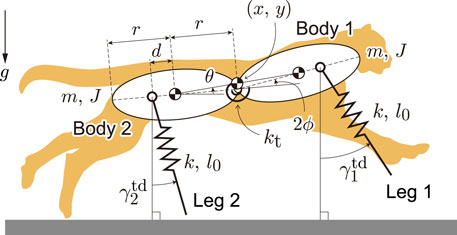
FIGURE 2. Our model consists of two rigid bodies connected by a joint with torsional spring and two massless spring legs.
When the tip of the leg reaches the ground, it is constrained on the ground and behaves as a frictionless pin joint. When the stance leg returns to its nominal length after compression, the tip leaves the ground, and the leg angle immediately returns to the touchdown angle
The equations of motion of the model are given by
where q = [x y θ ϕ]⊤,
and
From the measured cheetah data (Kamimura et al., 2021), we determined the physical parameters as follows: m = 19 kg, J = 0.53 kgm2, r = 0.29 m, l0 = 0.69 m, and d = 0.06 m. We used kt = 100 Nm/rad and k = 15000 N/m to reproduce a similar locomotor behavior to that of cheetahs from the perspective of body bending and gait cycle.
2.2 Search for Periodic Solutions
To find periodic solutions of the model, we defined the Poincaré section at the apex height of the COM of the whole body
so that the whole-body posture is symmetrical about a vertical axis through the spine joint and that the body spring is fully bent at the apex height, as shown in Figure 3. This allows symmetrical periodic solutions to be achieved that satisfy
where tn − Tn/2 ≤ τ ≤ tn + Tn/2 and Tn = tn+1 − tn.
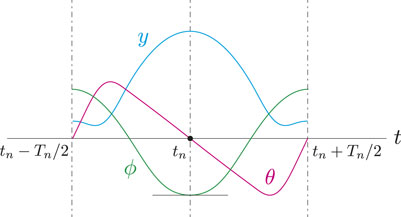
FIGURE 3. Additional constraints θ(tn) = 0 and
We used the Poincaré map P denoted by
where
2.3 Classification of Solutions
In the obtained periodic solutions, some solutions only had one flight phase and one double stance phase. Other solutions had two flight phases but no double stance phase. In addition, the flight phases are classified into two types based on the spine joint movement: extended and gathered. In extended flight, the spine joint is extended (ϕ > 0) at the mid-flight phase. In gathered flight, the spine joint is flexed (ϕ < 0) at the mid-flight phase. As a result, periodic solutions are classified into six types as shown in Figure 4:
1 Type E: Single extended flight with double stance
2 Type G: Single gathered flight with double stance
3 Type EE: Two extended flights without double stance
4 Type GG: Two gathered flights without double stance
5 Type EG: Two different flights (first: extended, second: gathered) without double stance
6 Type GE: Two different flights (first: gathered, second: extended) without double stance
where we assumed that the foreleg (Leg 1) is the first to touch down in solutions with two flights (Types EE, GG, EG, and GE).
2.4 Gait Characteristics of Cheetahs
Cheetah galloping shows three characteristics: small vertical COM movement, small whole-body pitching movement, and large spine bending movement. To evaluate to what extent the obtained periodic solutions showed these characteristics, we investigated the fluctuations of the COM height δy, whole-body pitch angle δθ, and spine joint angle δϕ, by examining the difference between the maximum and minimum values of y(t), θ(t), and ϕ(t), respectively, in one gait cycle as follows:
We compared these three characteristics with measured cheetah data in Kamimura et al. (2021), where four adult male cheetahs (40–50 kg) ran at a speed of 15–18 m/s. We analyzed eight strides (five from one cheetah and three from the others) and determined δy by the fluctuation of the height of the middle point between the shoulder joint and the greater trochanter of the femur, δθ by the fluctuation of the pitch angle of the line connecting the roots of the head and the tail, and δϕ by the fluctuation of the relative angle between the lines connecting the root of neck and 12th thoracic vertebra (T12), and T12 and root of the tail.
2.5 Performance Criteria
To evaluate the gait performance of the obtained solutions, we used the following three criteria: average horizontal velocity, impulse from the ground reaction force, and stability. The average horizontal velocity for one gait cycle of the periodic solution was calculated as
We evaluated the following aspects of the impulse from the ground reaction force: net, positive horizontal, negative horizontal, and vertical impulse. The net impulse for one gait cycle from the foreleg was identical to that from the hind-leg due to the symmetry of the motion and was obtained by
In the stance phase of Leg i (i = 1, 2), when γi > 0, the horizontal ground reaction force reduces the horizontal velocity of the COM. In contrast, it increases when γi < 0. Because
where tn + Tni is the moment when γi = 0 is achieved. Note that the amount of acceleration by the foreleg and deceleration by the hind-leg are identical, and the acceleration by the hind-leg and deceleration by the foreleg are identical. In other words,
The stability was determined by the eigenvalues of the linearized Poincaré map around the fixed point on the Poincaré section. Because our model was energy conservative, the solution was asymptotically stable when all of the eigenvalues, except for one eigenvalue of 1, were inside the unit cycle in the complex plane (these magnitudes are less than 1).
3 Results
3.1 Periodic Solutions
We numerically searched for periodic solutions using E0 = 4500 J to achieve a gait speed similar to that of cheetah galloping. Figure 5A shows the obtained solutions for
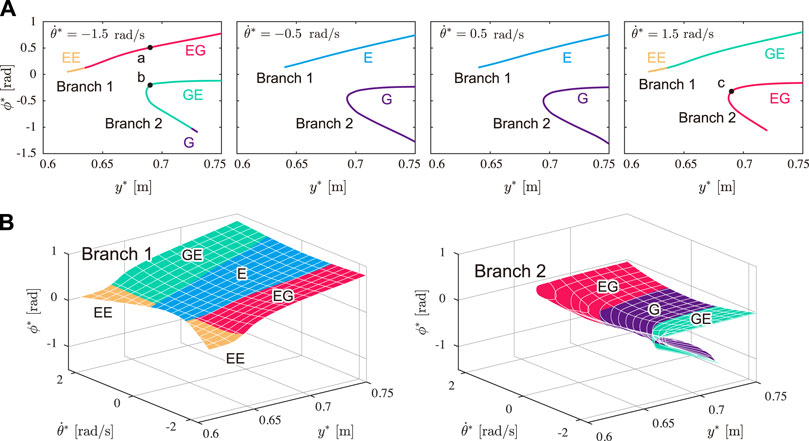
FIGURE 5. Obtained solutions (Type E: blue, Type G: purple, Type EE: yellow, Type EG: red, and Type GE: green). (A) Solutions for
Figure 6 shows the time profiles and snapshots of typical solutions for y* = 0.69 m. Figures 6A,B show the solution in Branch 1 (Type EG,
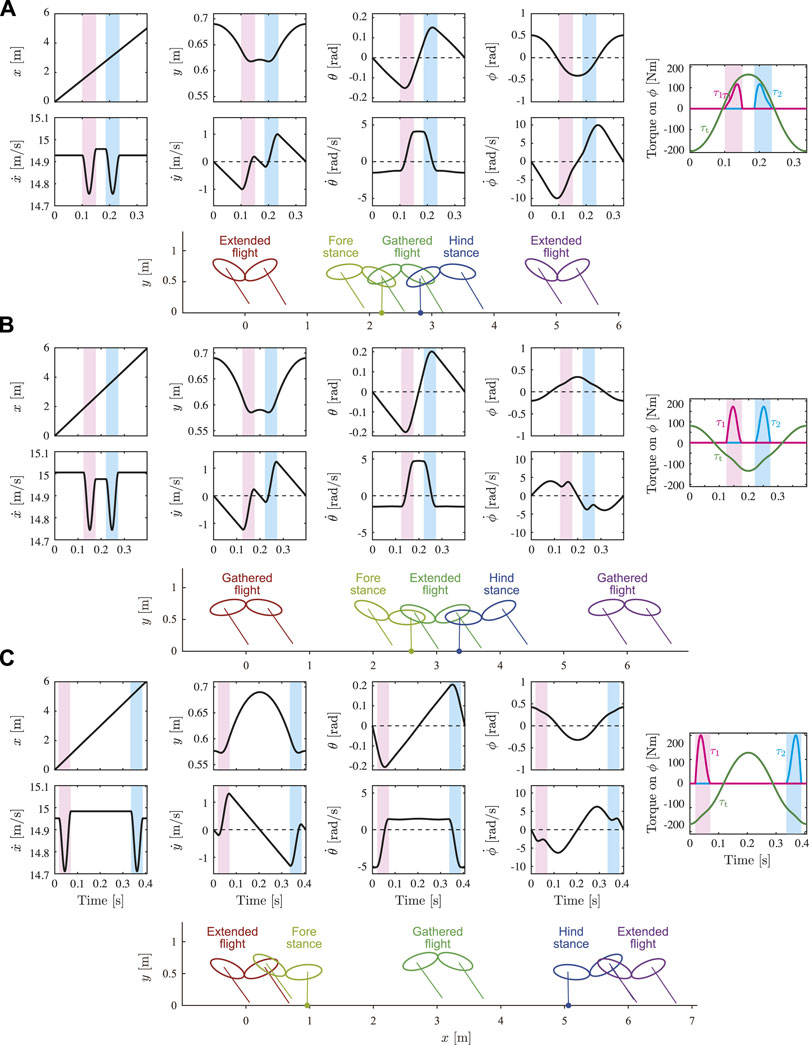
FIGURE 6. Time profiles and snapshots of typical solutions for y* = 0.69 m. Snapshots illustrate state at mid-stance or mid-flight in each phase (see Supplementary Movie). (A) Solution in Branch 1 (Type EG, a in Figure 5) and (B) solution in Branch 2 (Type GE, b in Figure 5) for
When we compare the time profiles of the state variables between Figures 6A,B, there is no qualitative difference in x, y, θ,
To understand the mechanism underlying the differences between Branches 1 and 2, we compared the torque on the spine joint ϕ in the stance phases. While the joint torque τt on ϕ from the body spring (first term in the fourth row of v(q) in Eq. 1) is positive to extend the spine joint in the stance phases in Figure 6A, it is negative to bend the spine joint in Figures 6B,C. The moments τ1 and τ2 on ϕ from the ground reaction forces of Legs 1 and 2, respectively (second and third terms, respectively, in the fourth row of v(q) in Eq. 1), are both positive to extend the spine joint.
3.2 Gait Characteristics of Solutions
We quantitatively evaluated what extent each obtained solution shows the characteristics of cheetah galloping. Figures 7A–C show the fluctuations in the COM height δy, whole-body pitch angle δθ, and spine joint angle δϕ, respectively, for y* of the obtained solutions with
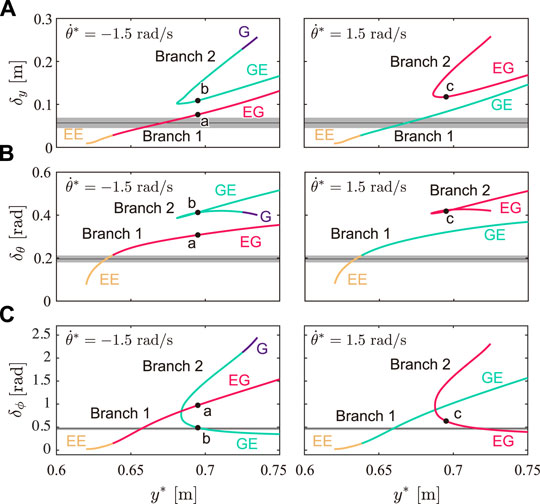
FIGURE 7. Gait characteristics of solutions. Fluctuations of (A) COM height δy, (B) whole-body pitch angle δθ, and (C) spine joint angle δϕ for y* for solutions with
From the measured cheetah data, we obtained δy = 0.057 ± 0.012 (S.E.) m, δθ = 0.20 ± 0.016 rad, and δϕ = 0.47 ± 0.029 rad, as shown in Figure 7, where black lines and grey areas show the average values and standard errors, respectively, of eight strides of the measured cheetah data. The solutions of Branch 1 showed closer values for δy, δθ, and δϕ to those of the measured data than the solutions of Branch 2.
3.3 Gait Performance of Solutions
We evaluated the gait performance of the obtained solutions by focusing on the difference between the two branches. Figure 8A shows the average horizontal velocity
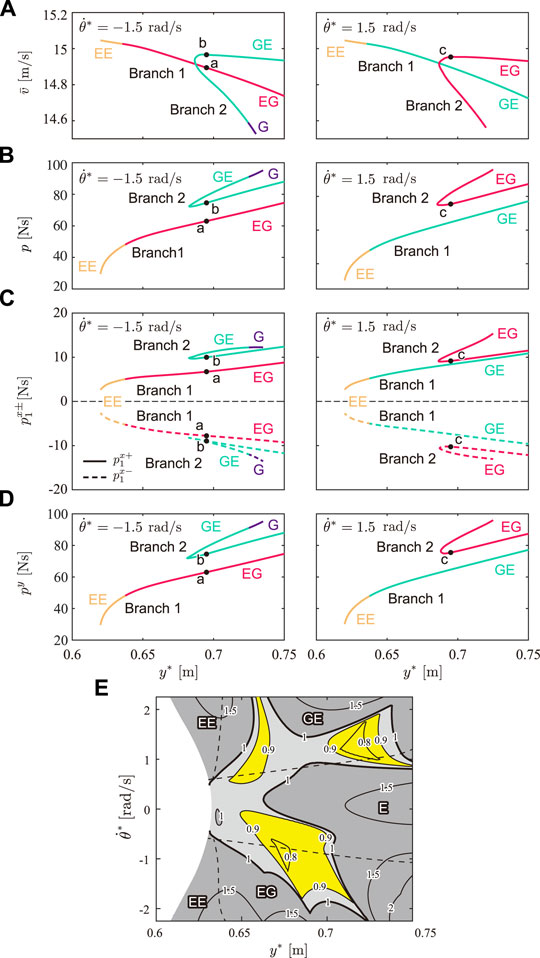
FIGURE 8. Gait performance of solutions. (A) Averaged horizontal velocity
Figures 8B–D show the net impulse p, horizontal impulses
Branch 2 has no stable solution and stable solutions were found only in Branch 1. Figure 8E shows the contour of the maximum eigenvalue of the linearized Poincaré map around the fixed point on the Poincaré section of Branch 1 projected onto the y*-
4 Discussion
Cheetahs are the fastest land animals. Their galloping shows three characteristics: small fluctuations in the COM height and whole-body pitch angle, and notable spinal bending. In this study, to clarify the dynamic mechanisms underlying these characteristics, we constructed a simple model and numerically obtained periodic solutions. The obtained solutions were classified into six types with respect to their flight phase and the spine joint movement. Solutions of Types E and G involve single flight with double stance, whose flight is extended and gathered, respectively. Solutions of Types EE and GG involve two flights without double stance, whose flights are both extended and both gathered, respectively. Solutions of Types EG and GE involve two flights without double stance, whose flights are extended and gathered like cheetahs. While the first and second flights are extended and gathered, respectively, for solutions of Type EG, they are gathered and extended for solutions of Type GE.
4.1 Comparison of Gait Characteristics and Performance Between Branches 1 and 2
The obtained periodic solutions were classified into two branches: Branch 1 and Branch 2 (Branch 2 has two solutions for each y*, as shown in Figure 5A). We compared the three characteristics in cheetah galloping between the solutions of Branches 1 and 2. The solutions of Branch 1 involved smaller fluctuations of the COM height δy and whole-body pitch angle δθ than those of both solutions of Branch 2 for each y*, as shown in Figures 7A,B, respectively. Moreover, the solutions of Branch 1 were obtained over a wider range of apex COM height y* than the solutions of Branch 2, as shown in Figure 5A. Therefore, the solutions of Branch 1 showed smaller vertical movement of the COM and whole-body pitching movement than the solutions of Branch 2, which is consistent with cheetah galloping. Furthermore, the two solutions of Branch 2 for each y* involve larger and smaller fluctuations of the spine joint angle δϕ than that of the solution of Branch 1 (Figure 7C). However, the solutions of Branch 2 with larger δϕ involve larger δy (Figure 7A), smaller average horizontal velocity
We next compared the three gait performances between the solutions of Branches 1 and 2. Although the solution of Type EE in Branch 1 involves the maximum average horizontal velocity
4.2 Mechanisms for Different Characteristics and Performance Between Branches 1 and 2
An important difference between the solutions of Branches 1 and 2 appears in the directions of the joint torque τt on the spine joint ϕ by the body spring, and the moments τ1 and τ2 on ϕ from the ground reaction forces of Legs 1 and 2, respectively. τ1 and τ2 extend the spine joint regardless of Branch (Figures 6, 9). In contrast, the direction of τt depends on the Branch. Specifically, while τt extends the spine joint in the stance phase of both the foreleg and hind-leg in the solutions of Branch 1 because ϕ < 0 (Figure 6A), it bends in the solutions of Branch 2 because ϕ > 0 (Figures 6B,C). Therefore, while the directions of τt and τi (i = 1, 2) are the same in the solutions of Branch 1, they are opposite in the solutions of Branch 2. This difference explains that the ground reaction forces enhance spinal movement in the solutions of Branch 1 whereas they prevent in the solutions of Branch 2. In addition, the opposite direction induced three peaks in
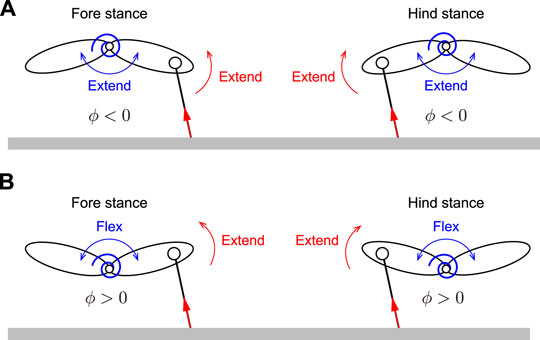
FIGURE 9. Contribution of body spring and ground reaction force to spine joint dynamics. (A) Both body spring and ground reaction force extend spine joint in solutions of Branch 1. (B) While body spring flexes spine joint, ground reaction force extends spine joint in solutions of Branch 2.
Because of the different directions of the torque on the spine joint described above, while the body spring pushes the legs down in the solutions of Branch 2, it pulls the legs up in the solutions of Branch 1, which made the net impulse p of the solutions of Branch 2 larger than that of the solutions of Branch 1 (Figure 8B). Furthermore, the horizontal impulses
The mechanism under which the solutions of Branch 1 showed the characteristics of cheetah galloping can be explained by the difference in the impulses between the solutions of Branches 1 and 2. When the model receives a large vertical impulse py, the model lifts off the ground with a large momentum in the y direction, which results in a large change in the COM height δy. Because the solutions of Branch 1 had a smaller vertical impulse py than the solutions of Branch 2 (Figure 8D), the solutions of Branch 1 involved a smaller δy than that of the solutions of Branch 2 (Figure 7A). Furthermore, in the solutions without a double stance phase (Types EE, EG, and GE), when the model receives a small impulse, the model lifts off the ground with a small angular momentum in the θ direction, which results in a small fluctuation of the whole-body pitch angle δθ. Therefore, because the solutions of Branch 1 had smaller impulses than the solutions of Branch 2, the solutions of Branch 1 involved smaller δθ than the solutions of Branch 2 (Figure 7B). When we focus on solutions with a double stance phase (Type G), δθ is smaller than that of the solution of Type GE of Branch 2 (Figure 7B), even when the solutions of Type G have larger impulse p than the solutions of Type GE of Branch 2 (Figure 8B). This is because the direction of moments from the ground reaction forces on the forelegs and hindlegs are in opposite directions and these effects are canceled in the double stance phase. However, the δθ of the solutions of Branch 2 is still larger than that of the solutions of Branch 1 (Figure 7B) because p of the solutions of Branch 1 is smaller than that of the solutions of Branch 2 (Figure 8B).
Moreover, since both the body spring and ground reaction force generate moments to extend the spine joint in the solutions of Branch 1 (Figure 9A), spinal movement is enhanced and results in larger fluctuations of the spine joint angle δϕ than those in the solutions of Branch 2 with smaller δϕ (Figure 7C), where the moment from the ground reaction force prevents spinal movement (Figure 9B). Although spinal movement in the solutions of Branch 2 with a larger δϕ is also prevented, they have larger δϕ than the solutions of Branch 1. This is because while the spine bending in the solutions of Branch 2 with small δϕ mainly appears in the stance phase, which is prevented by the ground reaction forces, the spine bending in the solutions of Branch 2 with large δϕ appears in the flight phase, which is not prevented by ground reaction forces. However, the impulse of the solutions of Branch 2 with larger δϕ is larger than that of the solutions of Branch 1 because the directions of torque from the body spring and ground reaction force are opposite, similar to the solutions of Branch 2 with smaller δϕ.
From the discussion above, we revealed the mechanism of why the solutions of Branch 1, which showed the characteristics of cheetah galloping well, achieved better gait performances than those of the solutions of Branch 2. Specifically, the ground reaction forces of the solutions of Branch 1 were reduced through the spine bending movement, which results in high-speed and stable locomotion, even they involved small impulses on the legs.
4.3 Why Cheetahs Use Type EG
The cheetah gallop is also characterized by involving two types of flights: extended and gathered (Hildebrand, 1989). In their galloping, the forelegs touch the ground after extended flight, and the gathered flight follows the liftoff of the forelegs. The hindlegs touch the ground after gathered flight, and extended flight follows the liftoff of the hindlegs (Figure 1). Therefore, the solutions of Type EG correspond to the cheetah galloping, as shown in Figure 4.
We obtained not only the solutions of Type EG but also the solutions of Type GE for both Branches 1 and 2, which also have two different flights, but in which the foreleg touches the ground after the gathered flight and the foreleg touches the ground after the extended flight (Figure 4). Although the solutions of Types E, G, EE were also found, no solution of only Type GG was found. This is consistent with Kamimura et al. (2021), where a simple model did not have any solutions of Type GG when d > 0, where d is the distance between the COM of the body and leg joint (Figure 2). When we compare the solutions of Types EG and GE of Branch 1, although there is no significant difference in the maximum values of the horizontal velocity
4.4 Limitations and Future Works
As shown in the solutions of Branch 1 (Figure 6), while
Furthermore, the solutions of Branch 1, which show three characteristics of cheetah galloping, have the same magnitude of flexion and extension of the spine (Figure 6). In contrast, the spinal hyperextension caused by the hind leg extension is inhibited by the epaxial muscles, which prevents the loss of propulsive forces by the hind legs in cheetahs (English, 1980; Wada et al., 2010). In addition, the hyperextension of the spinal column is prevented by the spinous processes. This discrepancy is mainly because our model has the same stiffness for the flexion and extension in the body spring, which does not prevent the hyperextension of the spine unlike the epaxial muscles and spinal processes of actual cheetahs. Moreover, although we assumed that the body spring is at the equilibrium position when the fore and hind bodies are in a straight line, the spine of actual cheetahs is supposed to be at the neutral position when the spine is slightly flexed. In future research, we would like to investigate the effects of such asymmetry properties.
Although galloping is characterized by different foot-contact timings between four legs, our model focused only on different foot-contact timings between the fore and hind legs. Different foot-contact timings between the left and right legs influence the gait stability and performances. In future research, we would like to improve our model to investigate the dynamical effects of different foot-contact timings between four legs on quadrupedal galloping.
Furthermore, although our model does not have any actuator or dissipation, actual cheetahs lose energy through collisions and inject energy via muscles. Moreover, trunk muscles work effectively during acceleration. In future research, we also would like to incorporate these effects to our model to improve the understanding of the mechanism of cheetah galloping.
Data Availability Statement
The raw data supporting the conclusion of this article will be made available by the authors, without undue reservation.
Author Contributions
TK, SA, and FM contributed to the design of this study. TK and KS conducted the numerical simulation and analysis in consultation with SA, YH, NW, KT, AS, and FM. TK and SA wrote the manuscript and all the authors reviewed and approved it.
Funding
This study was supported in part by JSPS KAKENHI Grant Numbers JP20K22392, JP21K14104, and JP20H00229; and JST FOREST Program Grant Number JPMJFR2021.
Conflict of Interest
The authors declare that the research was conducted in the absence of any commercial or financial relationships that could be construed as a potential conflict of interest.
Publisher’s Note
All claims expressed in this article are solely those of the authors and do not necessarily represent those of their affiliated organizations, or those of the publisher, the editors and the reviewers. Any product that may be evaluated in this article, or claim that may be made by its manufacturer, is not guaranteed or endorsed by the publisher.
Supplementary Material
The Supplementary Material for this article can be found online at: https://www.frontiersin.org/articles/10.3389/fbioe.2022.825638/full#supplementary-material
References
Adachi, M., Aoi, S., Kamimura, T., Tsuchiya, K., and Matsuno, F. (2020). Body Torsional Flexibility Effects on Stability during Trotting and Pacing Based on a Simple Analytical Model. Bioinspir. Biomim. 15, 055001. doi:10.1088/1748-3190/ab968d
Ambe, Y., Aoi, S., Nachstedt, T., Manoonpong, P., Wörgötter, F., and Matsuno, F. (2018). Simple Analytical Model Reveals the Functional Role of Embodied Sensorimotor Interaction in Hexapod Gaits. PLOS ONE 13, e0192469. doi:10.1371/journal.pone.0192469
Aoi, S., Manoonpong, P., Ambe, Y., Matsuno, F., and Wörgötter, F. (2017). Adaptive Control Strategies for Interlimb Coordination in Legged Robots: A Review. Front. Neurorobot. 11, 39. doi:10.3389/fnbot.2017.00039
Aoi, S., Ohashi, T., Bamba, R., Fujiki, S., Tamura, D., Funato, T., et al. (2019). Neuromusculoskeletal Model that Walks and Runs across a Speed Range with a Few Motor Control Parameter Changes Based on the Muscle Synergy Hypothesis. Sci. Rep. 9, 369. doi:10.1038/s41598-018-37460-3
Bertram, J. E. A., and Gutmann, A. (2009). Motions of the Running Horse and Cheetah Revisited: Fundamental Mechanics of the Transverse and Rotary Gallop. J. R. Soc. Interf. 6, 549–559. doi:10.1098/rsif.2008.0328
Blickhan, R., and Full, R. (1993). Similarity in Multilegged Locomotion: Bouncing like a Monopode. J. Comp. Physiol. A. 173, 509–517. doi:10.1007/bf00197760
Cao, Q., and Poulakakis, I. (2013). Quadrupedal Bounding with a Segmented Flexible Torso: Passive Stability and Feedback Control. Bioinspir. Biomim. 8, 046007. doi:10.1088/1748-3182/8/4/046007
Chen, J., San, H., Wu, X., Zhou, C., Qi, M., and Wang, L. (2019). Gait Regulation of a Bionic Quadruped Robot with Antiparallelogram Leg Based on CPG Oscillator. Complexity 2019, 1–11. doi:10.1155/2019/5491298
English, A. W. (1980). The Functions of the Lumbar Spine during Stepping in the Cat. J. Morphol. 165, 55–66. doi:10.1002/jmor.1051650106
Farley, C. T., Glasheen, J., and McMahon, T. A. (1993). Running Springs: Speed and Animal Size. J. Exp. Biol. 185, 71–86. doi:10.1242/jeb.185.1.71
Fujiki, S., Aoi, S., Funato, T., Sato, Y., Tsuchiya, K., and Yanagihara, D. (2018). Adaptive Hindlimb Split-belt Treadmill Walking in Rats by Controlling Basic Muscle Activation Patterns via Phase Resetting. Sci. Rep. 8, 17341. doi:10.1038/s41598-018-35714-8
Fukuhara, A., Koizumi, Y., Baba, T., Suzuki, S., Kano, T., and Ishiguro, A. (2021). Simple Decentralized Control Mechanism that Enables Limb Adjustment for Adaptive Quadruped Running. Proc. R. Soc. B Biol. Sci. 288, 20211622. doi:10.1098/rspb.2021.1622
Fukuhara, A., Koizumi, Y., Suzuki, S., Kano, T., and Ishiguro, A. (2020). Decentralized Control Mechanism for Body-Limb Coordination in Quadruped Running. Adaptive Behav. 28, 151–164. doi:10.1177/1059712319865180
Full, R. J., and Koditschek, D. E. (1999). Templates and Anchors: Neuromechanical Hypotheses of Legged Locomotion on Land. J. Exp. Biol. 202, 3325–3332. doi:10.1242/jeb.202.23.3325
Gan, Z., Wiestner, T., Weishaupt, M. A., Waldern, N. M., and David Remy, C. (2016). Passive Dynamics Explain Quadrupedal Walking, Trotting, and Tölting. J. Comput. Nonlinear. Dyn. 11, 0210081–2100812. doi:10.1115/1.4030622
Gan, Z., Jiao, Z., and Remy, C. D. (2018). On the Dynamic Similarity between Bipeds and Quadrupeds: a Case Study on Bounding. IEEE Robot. Autom. Lett. 3, 3614–3621. doi:10.1109/lra.2018.2854923
Grohé, C., Lee, B., and Flynn, J. J. (2018). Recent Inner Ear Specialization for High-Speed Hunting in Cheetahs. Sci. Rep. 8, 2301. doi:10.1038/s41598-018-20198-3
Hildebrand, M. (1961). Further Studies on Locomotion of the Cheetah. J. Mammalogy 42, 84–91. doi:10.2307/1377246
Hildebrand, M. (1959). Motions of the Running Cheetah and Horse. J. Mammalogy 40, 481–495. doi:10.2307/1376265
Hildebrand, M. (1989). The Quadrupedal Gaits of Vertebrates. Bioscience 39, 766–775. doi:10.2307/1311182
Hudson, P. E., Corr, S. A., and Wilson, A. M. (2012). High Speed Galloping in the Cheetah (Acinonyx Jubatus) and the Racing Greyhound (Canis familiaris): Spatio-Temporal and Kinetic Characteristics. J. Exp. Biol. 215, 2425–2434. doi:10.1242/jeb.066720
Ichikawa, H., Matsuo, T., Haiya, M., Higurashi, Y., and Wada, N. (2018). Gait Characteristics of Cheetahs (Acinonyx Jubatus) and Greyhounds (Canis lupus Familiaris) Running on Curves. Mammal Study 43, 199–206. doi:10.3106/ms2017-0089
Kamimura, T., Ambe, Y., Aoi, S., and Matsuno, F. (2015). Body Flexibility Effects on Foot Loading Based on Quadruped Bounding Models. Artif. Life Robotics 20, 270–275. doi:10.1007/s10015-015-0223-z
Kamimura, T., Aoi, S., Higurashi, Y., Wada, N., Tsuchiya, K., and Matsuno, F. (2021). Dynamical Determinants Enabling Two Different Types of Flight in Cheetah Gallop to Enhance Speed through Spine Movement. Sci. Rep. 11, 9631. doi:10.1038/s41598-021-88879-0
Kamimura, T., Aoi, S., Tsuchiya, K., and Matsuno, F. (2018). Body Flexibility Effects on Foot Loading in Quadruped Bounding Based on a Simple Analytical Model. IEEE Robot. Autom. Lett. 3, 2830–2837. doi:10.1109/lra.2018.2842925
Polet, D. T. (2021). The murphy Number: How Pitch Moment of Inertia Dictates Quadrupedal Walking and Running Energetics. J. Exp. Biol. 224, jeb228296. doi:10.1242/jeb.228296
Pouya, S., Khodabakhsh, M., Spröwitz, A., and Ijspeert, A. (2017). Spinal Joint Compliance and Actuation in a Simulated Bounding Quadruped Robot. Auton. Robot 41, 437–452. doi:10.1007/s10514-015-9540-2
Ruina, A., Bertram, J. E. A., and Srinivasan, M. (2005). A Collisional Model of the Energetic Cost of Support Work Qualitatively Explains Leg Sequencing in Walking and Galloping, Pseudo-elastic Leg Behavior in Running and the Walk-To-Run Transition. J. Theor. Biol. 237, 170–192. doi:10.1016/j.jtbi.2005.04.004
Schilling, N., and Hackert, R. (2006). Sagittal Spine Movements of Small Therian Mammals during Asymmetrical Gaits. J. Exp. Biol. 209, 3925–3939. doi:10.1242/jeb.02400
Swanstrom, M. D., Zarucco, L., Hubbard, M., Stover, S. M., and Hawkins, D. A. (2005). Musculoskeletal Modeling and Dynamic Simulation of the Thoroughbred Equine Forelimb during Stance Phase of the Gallop. J. Biomech. Eng. 127, 318–328. doi:10.1115/1.1865196
Tanase, M., Ambe, Y., Aoi, S., and Matsuno, F. (2015). A Galloping Quadruped Model Using Left-Right Asymmetry in Touchdown Angles. J. Biomech. 48, 3383–3389. doi:10.1016/j.jbiomech.2015.06.003
Toeda, M., Aoi, S., Fujiki, S., Funato, T., Tsuchiya, K., and Yanagihara, D. (2019). Gait Generation and its Energy Efficiency Based on Rat Neuromusculoskeletal Model. Front. Neurosci. 13, 1337. doi:10.3389/fnins.2019.01337
Usherwood, J. R., and Self Davies, Z. T. (2017). Work Minimization Accounts for Footfall Phasing in Slow Quadrupedal Gaits. eLife 6, e29495. doi:10.7554/eLife.29495
Usherwood, J. R. (2020). An Extension to the Collisional Model of the Energetic Cost of Support Qualitatively Explains Trotting and the Trot-Canter Transition. J. Exp. Zool. 333, 9–19. doi:10.1002/jez.2268
Wada, N. (2011). The Mechanism of the Cheetah’s Run. Annu. Meet. Mammalogical Soc. Jpn. [In Japanese] 2011, 95–101.
Wada, Y., Goto, M., Sano, Y., Hosoido, T., and Wada, N. (2010). The Polysynaptic Pathways from the Low Threshold Cutaneous Afferents of the Trunk to Motoneurons Innervating Hindlimb Muscles in the Spinal Cat. J. Vet. Med. Sci. 72, 73–76. doi:10.1292/jvms.09-0233
Walter, R. M., and Carrier, D. R. (2007). Ground Forces Applied by Galloping Dogs. J. Exp. Biol. 210, 208–216. doi:10.1242/jeb.02645
Wang, C., Zhang, T., Wei, X., Long, Y., and Wang, S. (2017). Dynamic Characteristics and Stability Criterion of Rotary Galloping Gait with an Articulated Passive Spine Joint. Adv. Robotics 31, 168–183. doi:10.1080/01691864.2016.1256230
Yamada, T., Aoi, S., Adachi, M., Kamimura, T., Higurashi, Y., Wada, N., et al. (2022). Center of Mass Offset Enhances the Selection of Transverse Gallop in High-Speed Running by Horses: A Modeling Study. Front. Bioeng. Biotechnol. 10, 825157. doi:10.3389/fbioe.2022.825157
Keywords: quadruped, cheetah, galloping, spine bending, simple model
Citation: Kamimura T, Sato K, Aoi S, Higurashi Y, Wada N, Tsuchiya K, Sano A and Matsuno F (2022) Three Characteristics of Cheetah Galloping Improve Running Performance Through Spinal Movement: A Modeling Study. Front. Bioeng. Biotechnol. 10:825638. doi: 10.3389/fbioe.2022.825638
Received: 30 November 2021; Accepted: 18 March 2022;
Published: 14 April 2022.
Edited by:
Marcus G. Pandy, The University of Melbourne, AustraliaReviewed by:
Michael Granatosky, New York Institute of Technology, United StatesShunsuke Shigaki, Osaka University, Japan
David V. Lee, University of Nevada, United States
Copyright © 2022 Kamimura, Sato, Aoi, Higurashi, Wada, Tsuchiya, Sano and Matsuno. This is an open-access article distributed under the terms of the Creative Commons Attribution License (CC BY). The use, distribution or reproduction in other forums is permitted, provided the original author(s) and the copyright owner(s) are credited and that the original publication in this journal is cited, in accordance with accepted academic practice. No use, distribution or reproduction is permitted which does not comply with these terms.
*Correspondence: Tomoya Kamimura, a2FtaW11cmEudG9tb3lhQG5pdGVjaC5hYy5qcA==; Shinya Aoi, c2hpbnlhX2FvaUBrdWFlcm8ua3lvdG8tdS5hYy5qcA==
 Tomoya Kamimura
Tomoya Kamimura Kaho Sato1
Kaho Sato1 Shinya Aoi
Shinya Aoi Naomi Wada
Naomi Wada Akihito Sano
Akihito Sano Fumitoshi Matsuno
Fumitoshi Matsuno